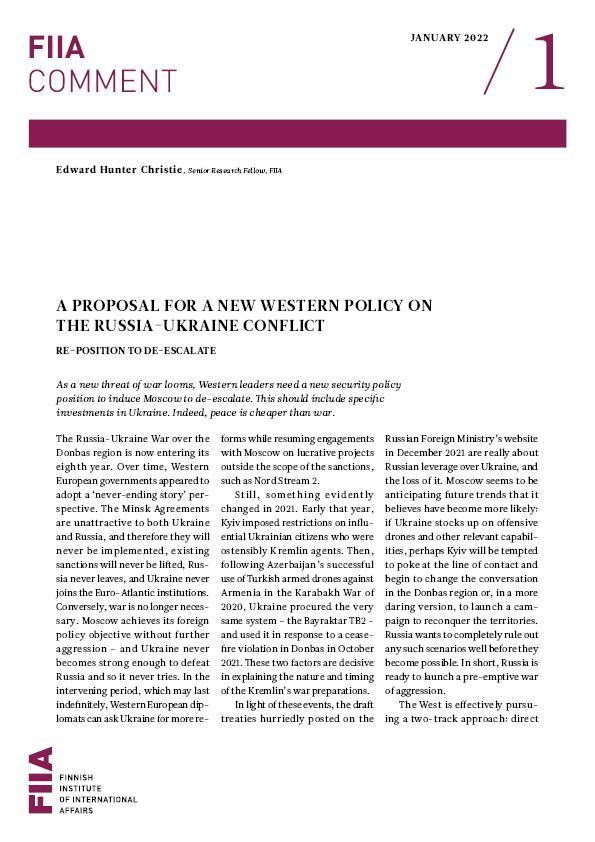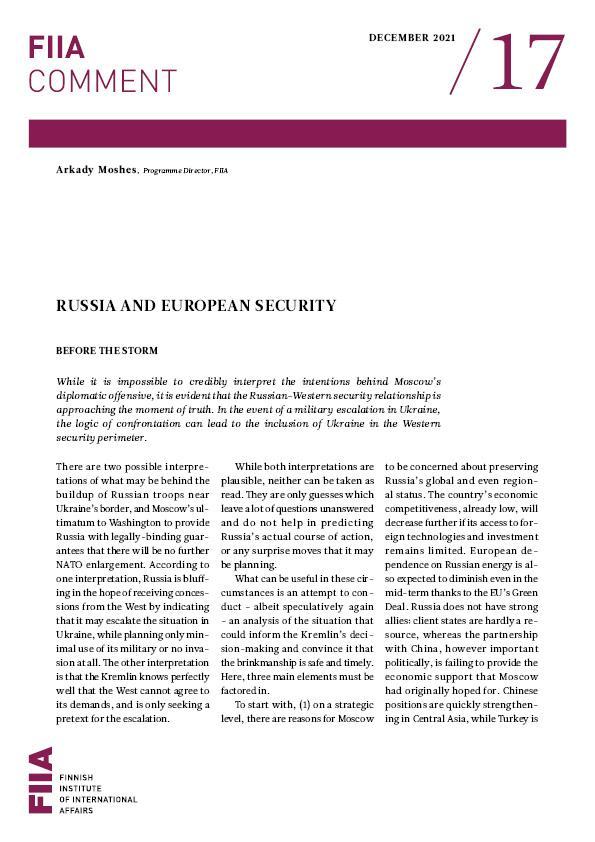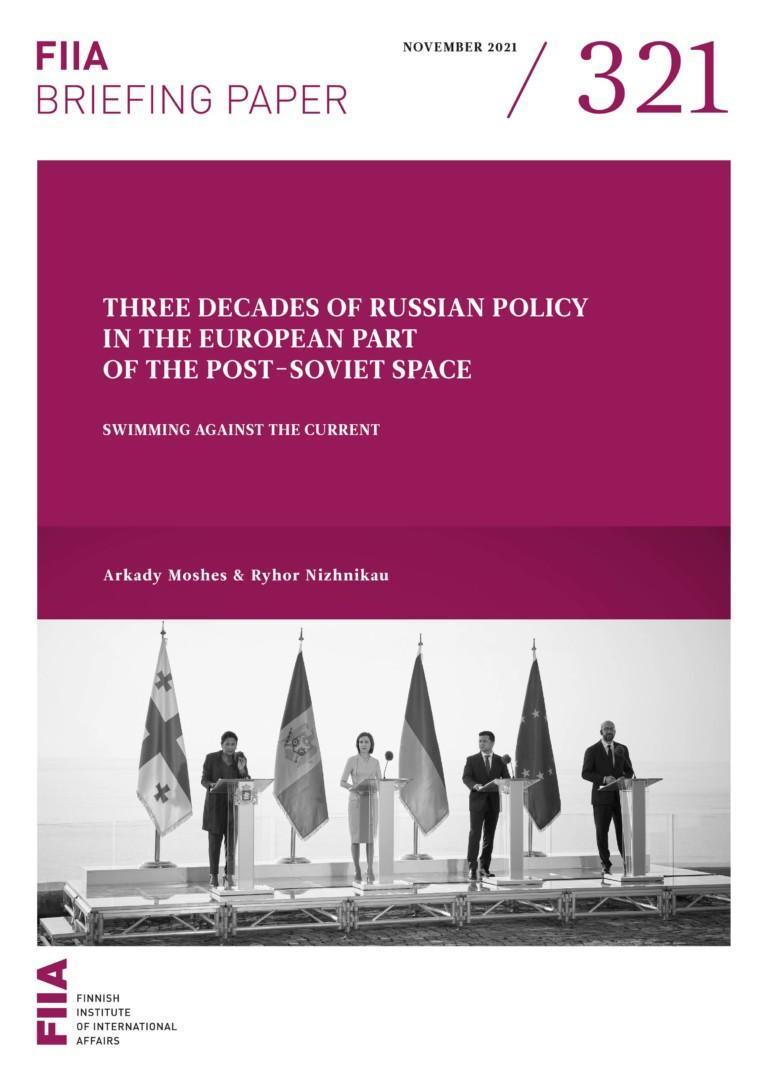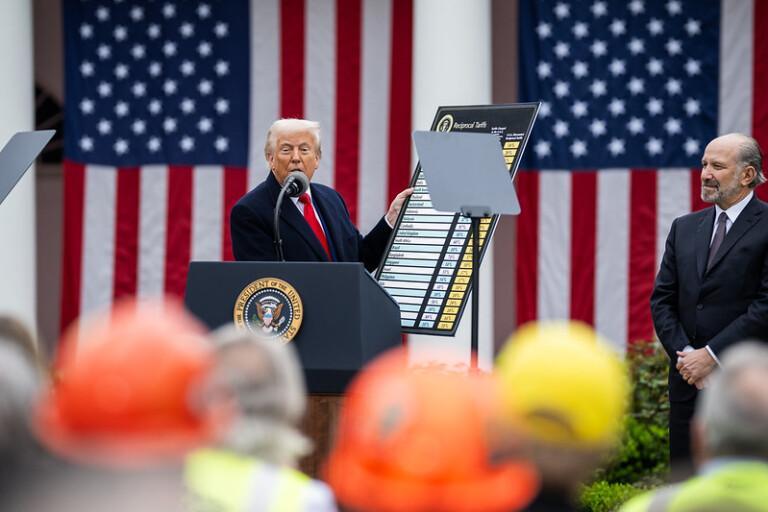
As a new threat of war looms, Western leaders need a new security policy position to induce Moscow to de-escalate. This should include specific investments in Ukraine. Indeed, peace is cheaper than war.
The Russia-Ukraine War over the Donbas region is now entering its eighth year. Over time, Western European governments appeared to adopt a ‘never-ending story’ perspective. The Minsk Agreements are unattractive to both Ukraine and Russia, and therefore they will never be implemented, existing sanctions will never be lifted, Russia never leaves, and Ukraine never joins the Euro-Atlantic institutions. Conversely, war is no longer necessary. Moscow achieves its foreign policy objective without further aggression – and Ukraine never becomes strong enough to defeat Russia and so it never tries. In the intervening period, which may last indefinitely, Western European diplomats can ask Ukraine for more reforms while resuming engagements with Moscow on lucrative projects outside the scope of the sanctions, such as Nord Stream 2.
Still, something evidently changed in 2021. Early that year, Kyiv imposed restrictions on influential Ukrainian citizens who were ostensibly Kremlin agents. Then, following Azerbaijan’s successful use of Turkish armed drones against Armenia in the Karabakh War of 2020, Ukraine procured the very same system – the Bayraktar TB2 – and used it in response to a ceasefire violation in Donbas in October 2021. These two factors are decisive in explaining the nature and timing of the Kremlin’s war preparations.
In light of these events, the draft treaties hurriedly posted on the Russian Foreign Ministry’s website in December 2021 are really about Russian leverage over Ukraine, and the loss of it. Moscow seems to be anticipating future trends that it believes have become more likely: if Ukraine stocks up on offensive drones and other relevant capabilities, perhaps Kyiv will be tempted to poke at the line of contact and begin to change the conversation in the Donbas region or, in a more daring version, to launch a campaign to reconquer the territories. Russia wants to completely rule out any such scenarios well before they become possible. In short, Russia is ready to launch a pre-emptive war of aggression.
The West is effectively pursuing a two-track approach: direct negotiations with Russia on the hard security aspects, and joint US-EU preparations of economic sanctions. The consensus-building process and the design criteria for the sanctions appear similar to what they were in 2014, including for instance the goal of balancing costs between EU member states. This approach will make Germany the balancing actor once again. It is also unlikely to lead to heavy sanctions. This is dangerous if the sanctions are to be a significant component of the overall position to deter Russia from war.
Additional considerations are needed for a more effective package of measures. First, Western nations should also consider positive economic inducements, not towards Russia, but towards Ukraine. The conversation should shift to the nation’s progress towards peace and prosperity based on improved access to Western markets for Ukrainian goods and services. All Western allies should rapidly agree to this. Programmes to facilitate civilian investments and transfers of civilian technology could also go a long way towards supporting Ukraine’s development.
Second, the United States should endorse the special responsibility that Moscow is de facto asking it to adopt, namely to place limits on military activities – both actions and postures – in Ukraine. This does not mean abandoning Ukraine to a possible Russian invasion. The goal should be to shift the military conversation from active conflict towards credible but well-controlled deterrence. Ukraine should be a hard and costly target, while steering clear of unnecessary frictions close to the line of contact. Technical assistance could be deployed to transform the line of contact into something more like a demilitarized zone. In that light, an open presence of US personnel inside Ukraine could be transformed from an alleged threat into an actual reassurance for Moscow. The ball will then be in Moscow’s court to interpret developments in a constructive spirit.
Third, sanctions should be deep and long-lasting, but with the earnest hope that they need never be deployed. Rather than expecting war to actually happen while seeking sanctions that have low costs, Western governments should adopt a sharper bifurcation: it’s either business as usual or decoupling. If this principle could be fixed, the incentive for all concerned to preserve peace would be far greater. Decoupling would take the following form: new export taxes and import tariffs on all exchanges of goods and services with Russia, including energy. This would come in addition to financial measures and export controls that have already been discussed. The decoupling policy could start with 20% tax and tariff rates, with automatic increases every year. The relevant provision of the General Agreement on Tariffs and Trade, Article XXI (b) (iii), has already been held to apply to the Russia-Ukraine conflict. The revenues would cross-subsidize import and export diversification away from Russia. Russia would have to restructure its energy transportation system and its technological and industrial base. Politically, it would be the overdue end of the dream of transforming Russia through trade and investment. Nevertheless, this strategic divorce would have a reliable schedule and should be reversible if designated territories are returned.
Dreams, like never-ending stories, have a habit of ending. But it is not too late for the West to design and implement incentives that preserve that which matters most. Ukraine, and Europe, admittedly not whole, but free, at peace, and prosperous.










